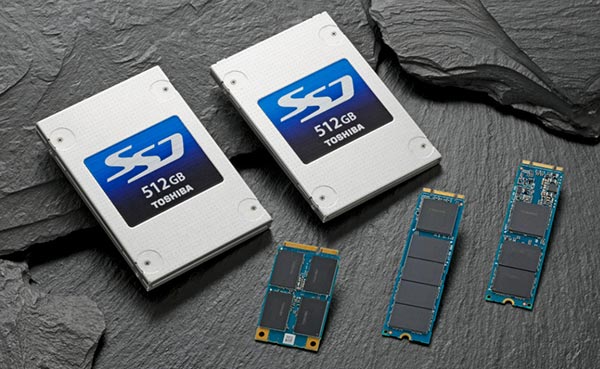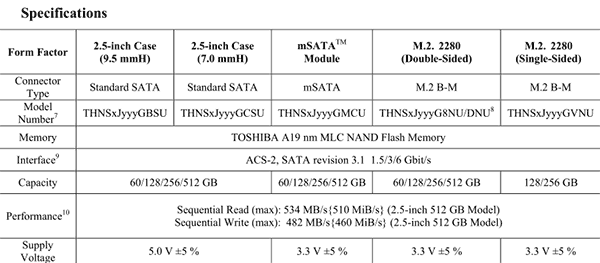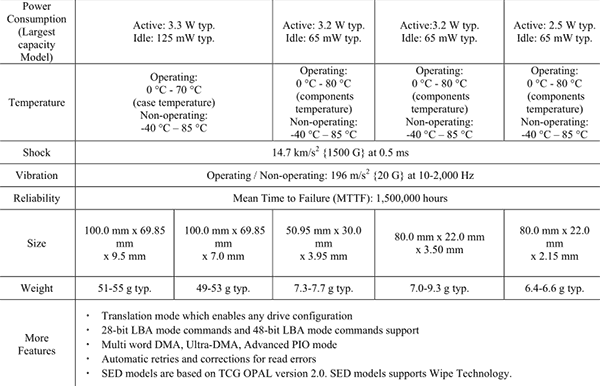Toshiba has announced it is launching its first range of SSDs which will employ its second generation 19nm NAND chips. Drives with capacities of 60GB, 128GB, 256GB and 512GB will be produced in form factors including 2.5-inch (both 9.5mm thick and 7mm thick), mSATA module and M2 (double and single sided(128GB and 256GB only)). The Toshiba HG6 Series SSDs will be available from March onwards.

Toshiba informs us that the HG6 Series won't be targeted at any specific market but will be available and suitable for a wide variety of applications and is thus "optimized for notebook PCs, workstations, thin clients, server boot drives, and read-intensive enterprise applications". This series of drives is touted to offer both high performance and power efficiency. Performance figures for the whole series of drives is quoted as 534MB/s sequential read and 482MB/s sequential write (512GB model).

"With the HG6 series, customers can trust they are using a storage solution with high performance and power efficiency that is ideal for a wide range of applications," said Don Jeanette, senior director of marketing at Toshiba Storage Products Business Unit. "As inventors of NAND technology, we leverage our NAND expertise to optimize the performance and data integrity of this series, and truly give customers the power of choice with a broad selection of capacities and form factors."

Toshiba says the drives are "engineered with enterprise class technology for data integrity," and incorporate error correction tech which protects customers from NAND wear corruption. For security these SSDs also feature encryption compliant with the Trusted Computing Group.
Toshiba only started mass producing NAND using its second generation 19nm process at the end of May last year. The chips have a die size nearly 20 per cent smaller than the previous generation and implement a "unique high speed writing method". As mentioned in the intro, Toshiba's HG6 range will start to ship from March this year, however we shall have to wait until nearer that time for pricing.













